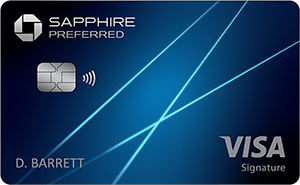We may receive a commission when you use our links. Monkey Miles is part of an affiliate sales network and receives compensation for sending traffic to partner sites, such as CreditCards.com and CardRatings. This relationship may impact how and where links appear on this site. This site does not include all financial companies or all available financial offers. Monkey Miles is also a Senior Advisor to Bilt Rewards. Terms apply to American Express benefits and offers. Enrollment may be required for select American Express benefits and offers. Visit americanexpress.com to learn more Opinions, reviews, analyses & recommendations are the author’s alone, and have not been reviewed, endorsed or approved by any of these entities.
MMMondayMemo: What’s a co-brand credit card?
Each Monday, Miles has decided to drop a tip, hint, tutorial, trick that maybe you’ve missed or haven’t heard before. If you’re an expert in this field, some of these may be things you already know, but there are a lot of beginners out there who are just getting their feet wet. This week, the Monkey Miles Monday Memo answers the question: What’s a co-brand credit card?
I was at a party over the weekend and someone was asking the difference between a normal Amex and a Delta one – co-branding came up.
What I realized is that there are so many cards out there and so many different options that it can become very confusing.
Per Wikipedia:
Co-branding, also called brand partnership, is when two companies form an alliance to work together, creating marketing synergy. As described in Co-Branding: The Science of Alliance:
Simply, A co-branded card is one with two companies logos on it
Let’s take Delta Amex for example.
American Express has a deal with Delta that allows users to spend money on their American Express card, but instead of earning Membership Rewards, cardholders earn Delta Miles.

The most important thing to remember with a co-branded card is the miles will be fixed into the brand that is co-branded, i.e. Marriott, Hyatt, Delta, American, United, etc.
If you’re unfamiliar with the difference between fixed and flexible currencies then check out my Beginner’s Guide: Difference between fixed and flexible currencies.
Opinions, reviews, analyses & recommendations are the author’s alone, and have not been reviewed, endorsed or approved by any of these entities.



The responses below are not provided or commissioned by the bank advertiser. Responses have not been reviewed, approved, or otherwise endorsed by the bank advertiser. It is not the bank advertiser's responsibility to ensure all posts and/or questions are answered.